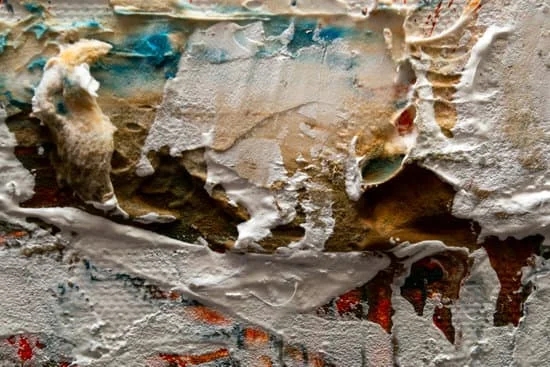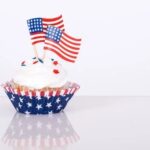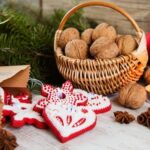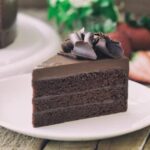Cake decoration is an essential aspect of creating visually appealing and delightful treats. The way a cake is decorated can make a significant impact on its overall appearance, turning a simple dessert into a stunning centerpiece for any celebration.
From birthdays to weddings, cakes are often the focal point of any event, making it crucial to adorn them with beautiful decorations that not only look good but also elevate the taste experience. So, what can you decorate a cake with to achieve that wow factor?
When it comes to decorating cakes, the options are endless. From different types of frosting like buttercream and fondant to edible decorations such as sprinkles and chocolate shavings, there are countless ways to customize a cake according to one’s preferences and creativity.
Edible flowers, fresh fruits like berries and kiwi, fondant, and gum paste are just some of the ingredients that can be used to add color, texture, and flavor to a cake. These elements not only enhance the visual appeal but also contribute to the overall taste profile.
For those looking to take their cake decorating skills up a notch, exploring advanced techniques like piping borders and flowers, using unique tools like stencils and airbrush kits, or even delving into sculpting cakes or creating mirror glaze can open up new avenues for creativity.
Whether you’re a beginner experimenting with basic designs or an experienced baker seeking to push boundaries with intricate decorations, mastering the art of cake decoration can truly elevate your baking game and impress anyone who indulges in your delectable creations.
Types of Frosting
When it comes to decorating a cake, one of the most important elements to consider is the type of frosting you use. The choice of frosting can greatly impact the overall look and taste of the cake. One popular option is buttercream frosting, which is creamy, easy to work with, and can be flavored in various ways. Buttercream is perfect for creating smooth finishes or intricate designs on cakes.
Another versatile frosting option is royal icing, which hardens into a smooth and glossy finish. Royal icing is often used for intricate piping work, such as delicate lace designs or intricate floral details. Fondant is another popular choice for cake decoration, as it can be rolled out to create smooth finishes or molded into unique shapes and figures. Ganache, a mixture of chocolate and cream, is a rich and decadent frosting that provides a glossy finish to cakes.
Using Buttercream Frosting
Buttercream frosting can be easily colored with food coloring gels to create vibrant hues for your cake decorations. It can also be used with different piping tips to create various textures and designs on the cake surface. Whether you choose to spread it smoothly over a cake or create elaborate floral patterns with it, buttercream offers endless possibilities for creative cake decorating.
Working With Fondant
Fondant is a pliable sugar paste that can be rolled out like dough and draped over cakes for a smooth appearance. It can also be shaped into 3D decorations like flowers, bows, or figurines. Fondant allows you to achieve clean lines and sharp edges in your cake decorations, making it ideal for elegant wedding cakes or themed birthday cakes. Remember to dust your work surface with powdered sugar or cornstarch when rolling out fondant to prevent sticking.
Edible Decorations
Sprinkles are versatile decorations that come in various shapes, sizes, and colors. They add a fun and festive touch to any cake, whether it’s for a birthday party or a wedding celebration. Edible glitter is another eye-catching addition that instantly elevates the visual appeal of a cake. Made from safe-to-consume materials like sugar or gum arabic, edible glitter adds a glamorous sparkle to your creations.
Chocolate shavings are not only visually appealing but also provide a rich and decadent flavor to cakes. Whether using dark, milk, or white chocolate, shaving it into delicate curls or gratings can create an elegant finish on your cakes. Moreover, edible flowers such as pansies, roses, or violets can bring a touch of nature and sophistication to your designs. These blooms are not only beautiful but also safe for consumption when sourced from reputable suppliers.
| Edible Decoration | Description |
|---|---|
| Sprinkles | Versatile decorations in various shapes and colors |
| Edible Glitter | Adds a glamorous sparkle to cakes |
| Chocolate Shavings | Provides rich flavor and elegant finish |
| Edible Flowers |
Fresh Fruit
When it comes to citrus fruits, slices of oranges, lemons, limes, or even grapefruits can add a refreshing burst of flavor to a cake while also bringing a bright and cheery appearance. The tangy zest of citrus slices can cut through the sweetness of the cake and frosting, providing a well-balanced palate experience for anyone enjoying a slice.
Similarly, kiwi slices or cubes can introduce a tropical touch to the cake with their vibrant green color and slightly tart taste.
In addition to adding visual appeal and flavor to cakes, incorporating fresh fruits into your cake decoration also allows you to experiment with different textures. For instance, the juicy nature of berries can provide a soft and moist element amidst the fluffy cake layers and creamy frosting.
The slight crunch from seeds in some berries can offer an interesting textural contrast that elevates the eating experience. Whether layered on top of the cake, nestled between tiers, or positioned as garnishes around the base, fresh fruits bring both aesthetics and delectable flavors to your cake decorating repertoire.
Fondant and Gum Paste
One of the key advantages of using fondant and gum paste is the endless possibilities they offer for creativity in cake decorating. These mediums can be colored with food coloring to achieve any desired shade or mixed together to create marbled effects.
They can also be molded into 3D shapes like flowers, animals, or even figurines to suit any theme or occasion. Whether you’re looking to create a whimsical fairy-tale castle cake or an elegant wedding cake with intricate lace details, fondant and gum paste provide the flexibility needed to bring your vision to life.
In addition to their versatility in design possibilities, fondant and gum paste also help achieve a flawless finish on cakes by providing a smooth canvas for decorating. By covering a cake with a layer of fondant or adding gum paste accents, imperfections such as uneven surfaces or crumbly edges can be easily concealed.
This results in a professional-looking outcome that is sure to impress guests at any celebration. When considering what can you decorate a cake with, fondant and gum paste stand out as essential tools for bringing creativity, precision, and elegance into cake decoration.
| Fondant and Gum Paste Benefits | Examples |
|---|---|
| Versatile medium for intricate designs | 3D flowers, figurines |
| Endless creative possibilities | Marbling effects, themed designs |
| Smooth finish for professional-looking cakes | Concealing imperfections on cakes |
Piping Techniques
Understanding the Basics of Piping Techniques
Piping techniques play a crucial role in cake decoration, allowing bakers to add intricate designs and decorative elements to their creations. Whether you are a beginner or an experienced baker, mastering piping techniques can enhance the overall appearance of your cakes. Different piping tips result in various shapes and textures, giving you endless possibilities for creativity.
Creating Borders With Piping Tips
One popular use of piping techniques is to create borders around the edges of a cake. Using different sizes and styles of piping tips, you can achieve different border designs such as shells, ropes, or beads. Borders not only frame the cake beautifully but also add a professional touch to your finished creation. Experimenting with different piping tips will help you discover which designs work best for your cakes.
Designing Flowers and Other Decorative Elements
Piping techniques are also commonly used to create flowers and other decorative elements that can adorn a cake. With the right piping tip and technique, you can craft realistic-looking flowers like roses, peonies, or daisies out of buttercream or royal icing.
Additionally, intricate patterns and shapes can be piped onto cakes for a personalized touch. Practice is key when it comes to achieving flawless piping work, so don’t be afraid to experiment with different combinations until you find what works best for your desired design vision.
As you delve into the world of cake decoration through piping techniques, remember that practice makes perfect. Don’t shy away from trying new designs and pushing your creative boundaries – after all, the beauty of cake decoration lies in its versatility and endless possibilities. Whether you’re adding borders, flowers, or other decorative elements to your cakes, mastering piping techniques will undoubtedly elevate your creations to new heights.
Creative Tools
When it comes to decorating a cake, having the right tools can truly elevate the final look of your creation. Unique tools like stencils, edible markers, airbrush kits, and silicone molds offer endless possibilities for creativity and precision in cake decoration. Stencils are a fantastic way to add intricate patterns or designs to your cake with ease. Simply place the stencil on top of your cake and dust powdered sugar or cocoa over it for a professional finish.
Edible markers provide another fun avenue for customization, allowing you to hand-draw detailed designs or personalized messages directly onto your cake. Airbrush kits offer a modern and versatile approach to adding color gradients and shading effects to your cakes. By using different colors and adjusting the pressure settings, you can achieve stunning ombre effects or create realistic textures like wood grain or marble.
Silicone molds are perfect for creating 3D embellishments, such as flowers, shapes, or figures, that can easily be attached to your cake. These molds come in a variety of designs and sizes, making them ideal for both beginners and experienced decorators looking to add intricate details effortlessly.
Whether you’re looking to add a touch of elegance with delicate lace patterns or make a bold statement with vibrant shapes, these creative tools are essential for taking your cake decoration skills to the next level.
Incorporating these unique tools into your cake decorating arsenal opens up a world of possibilities for expressing your creativity and showcasing your personal style. Experimenting with different techniques and combining various tools can result in stunning masterpieces that will impress any guest at a special occasion. So next time you’re wondering what you can decorate a cake with, consider incorporating stencils, edible markers, airbrush kits, and silicone molds into your artistic process for truly show-stopping results.
Advanced Techniques
When it comes to cake decorating, there are advanced techniques that can truly elevate the appearance of your cakes. One such technique is cake sculpting, where you can carve and shape the cake into different designs or shapes. Whether you want to create a 3D character or a unique structure, cake sculpting allows for endless creativity. This technique requires some practice and patience, but the results can be absolutely stunning.
Another advanced cake decorating technique is brush embroidery, which involves using a thin brush to create delicate designs on the surface of the cake. This technique gives cakes a beautiful textured look resembling intricate lace patterns or floral designs. By simply using different colored frostings and a steady hand, you can achieve stunning brush embroidery effects that will impress your guests.
Furthermore, mirror glaze is another advanced technique that adds a glossy and reflective finish to cakes. This technique involves pouring a mirror-like glaze over the cake, creating a smooth and shiny surface that is visually striking. With mirror glaze, you can achieve vibrant colors and mesmerizing swirls on your cakes, making them truly stand out. Experimenting with different color combinations and patterns can result in stunning visual effects that will make your cakes irresistible.
- Cake sculpting allows for creative 3D designs
- Brush embroidery creates delicate lace-like patterns on cakes
- Mirror glaze adds a glossy and reflective finish to cakes
Conclusion
In conclusion, decorating a cake is not only about making it visually appealing but also about adding personal touch and creativity to your baked creations. The types of frosting you choose can greatly impact the final look of your cake, whether you opt for a classic buttercream or go for a more sophisticated fondant design. Edible decorations such as sprinkles, edible glitter, and fresh fruit can provide both color and flavor to your masterpiece.
For beginners interested in exploring the world of cake decoration, it is important to start with simple techniques like basic piping and using edible markers before moving on to more advanced methods like sculpting or mirror glaze. Investing in creative tools such as stencils and silicone molds can also elevate your cake decorating game.
Remember that practice makes perfect when it comes to cake decoration, so don’t be discouraged by initial setbacks. Experiment with different ingredients and techniques, and most importantly, have fun expressing yourself through the art of decorating cakes. With dedication and patience, you’ll soon discover endless possibilities for what you can decorate a cake with.
Frequently Asked Questions
What Can Be Used to Decorate a Cake?
There are various options to decorate a cake, such as buttercream frosting, fondant, whipped cream, chocolate ganache, fresh fruits, edible flowers, sprinkles, candies, or even edible glitter. These decorations not only add visual appeal but can also enhance the flavor of the cake.
What Can I Top a Cake With Besides Frosting?
Apart from traditional frosting, cakes can be topped with alternatives like fruit compote, chocolate sauce, caramel drizzle, crushed nuts or seeds, shredded coconut, whipped cream or cream cheese icing. These toppings can add different textures and flavors that complement the taste of the cake.
What Can I Top My Cake With?
When it comes to topping your cake, the possibilities are endless. You could go for a simple dusting of powdered sugar or cocoa powder for an elegant touch. Fresh berries or fruit slices provide a refreshing burst of flavor and color.
Nuts like almonds or pecans offer a crunchy contrast to a moist cake texture. Additionally, you could consider spreading jam or curd on top for a burst of fruity goodness. Whipped cream rosettes or decorative chocolate curls can add a touch of sophistication to your creation – the key is to get creative and have fun experimenting with different toppings that suit your taste preferences and the occasion for which the cake is intended.

Welcome to our cake decorating blog! My name is Destiny Flores, and I am the proud owner of a cake decorating business named Cake Karma. Our mission is to provide delicious, beautiful cakes for all occasions. We specialize in creating custom cakes that are tailored specifically to each customer’s individual needs and tastes.





